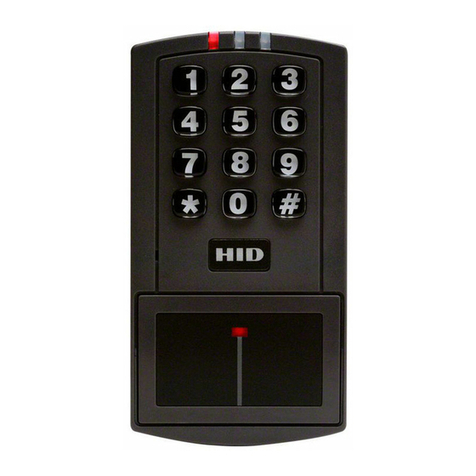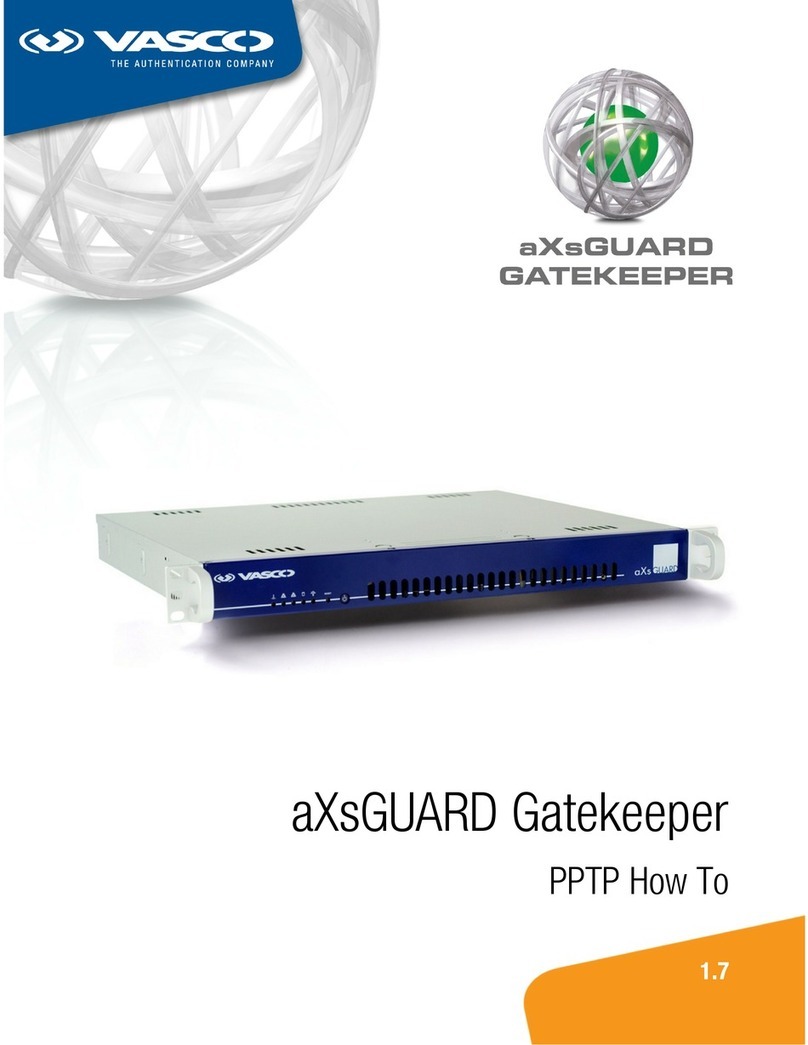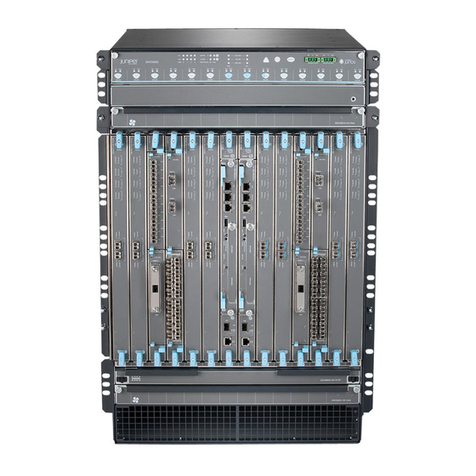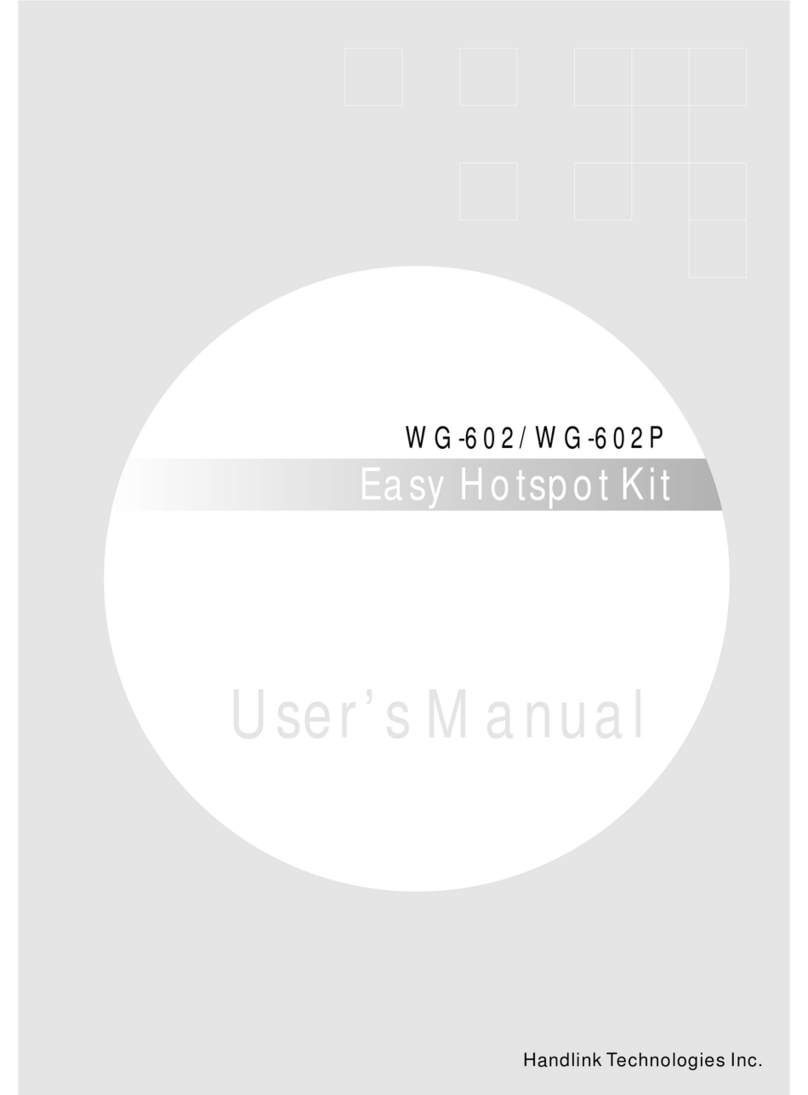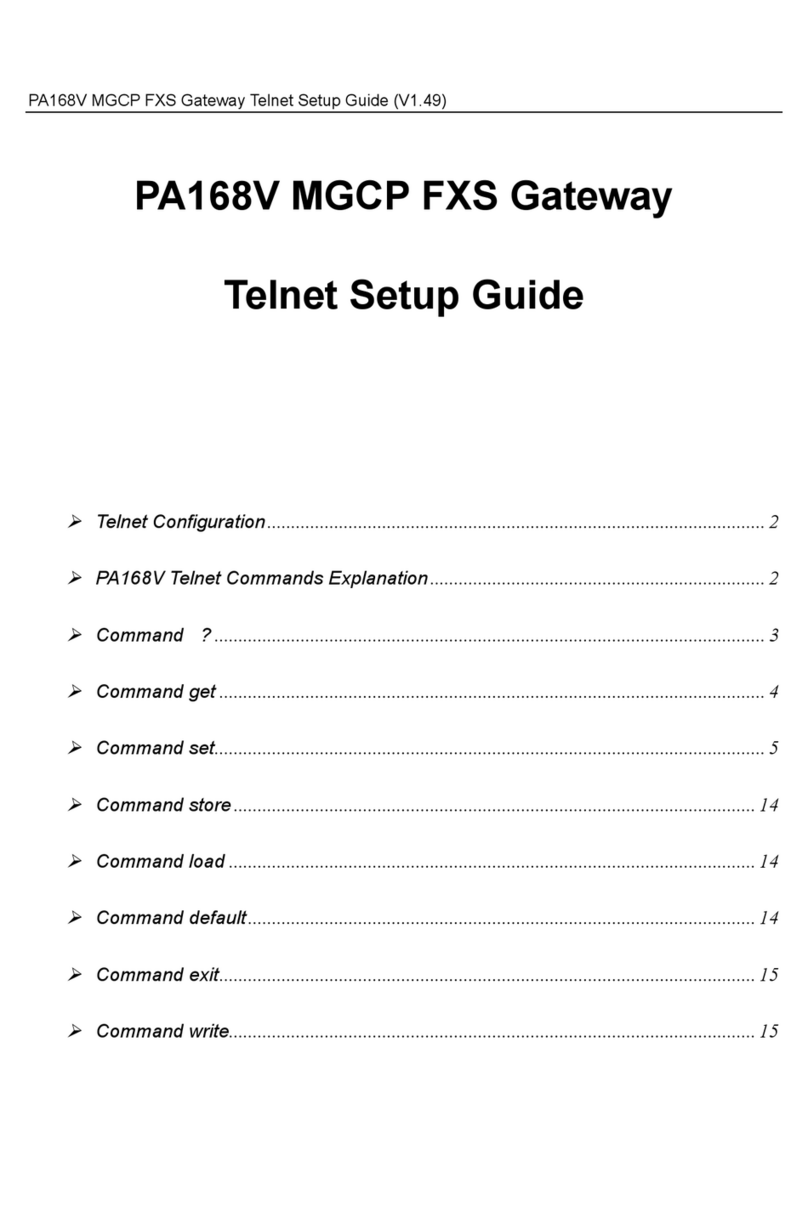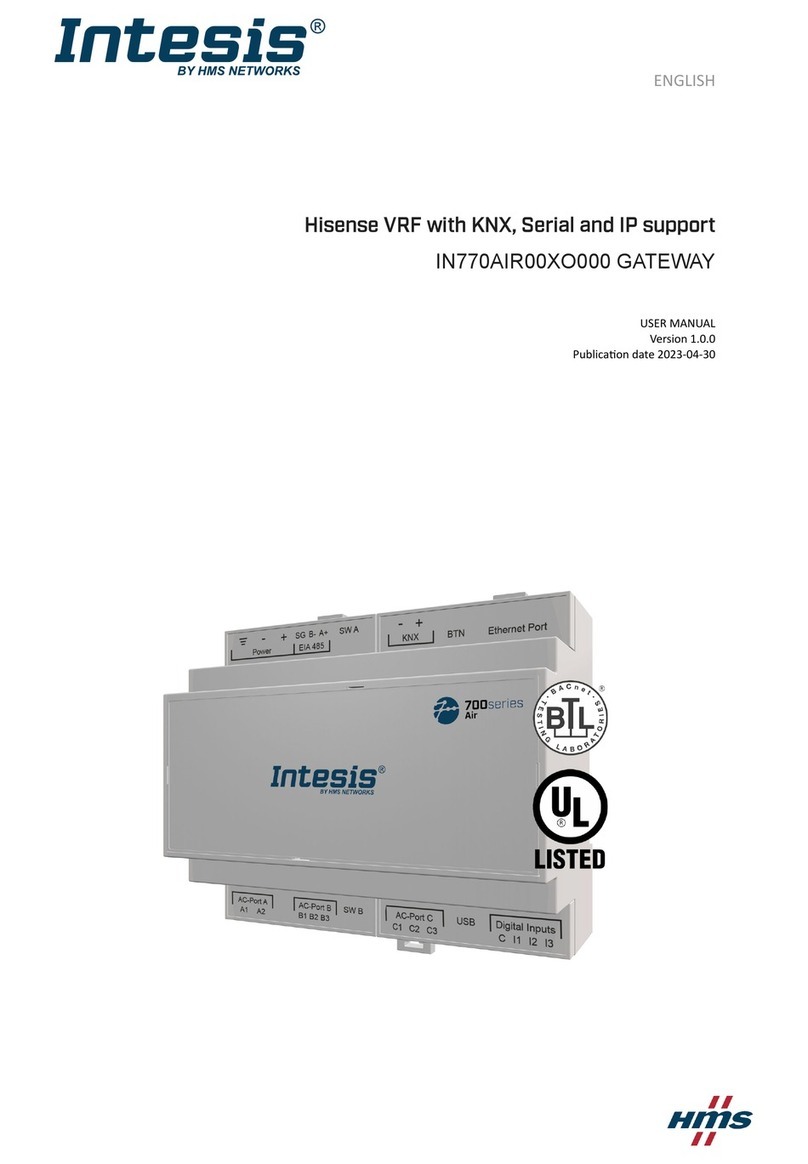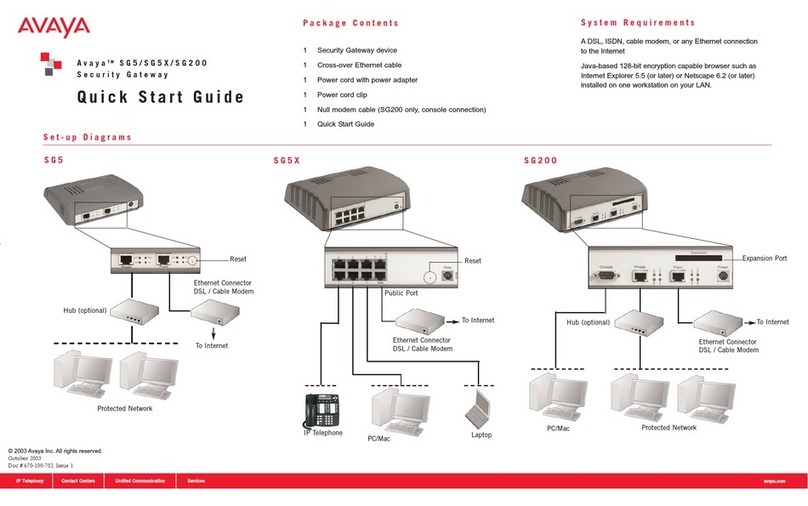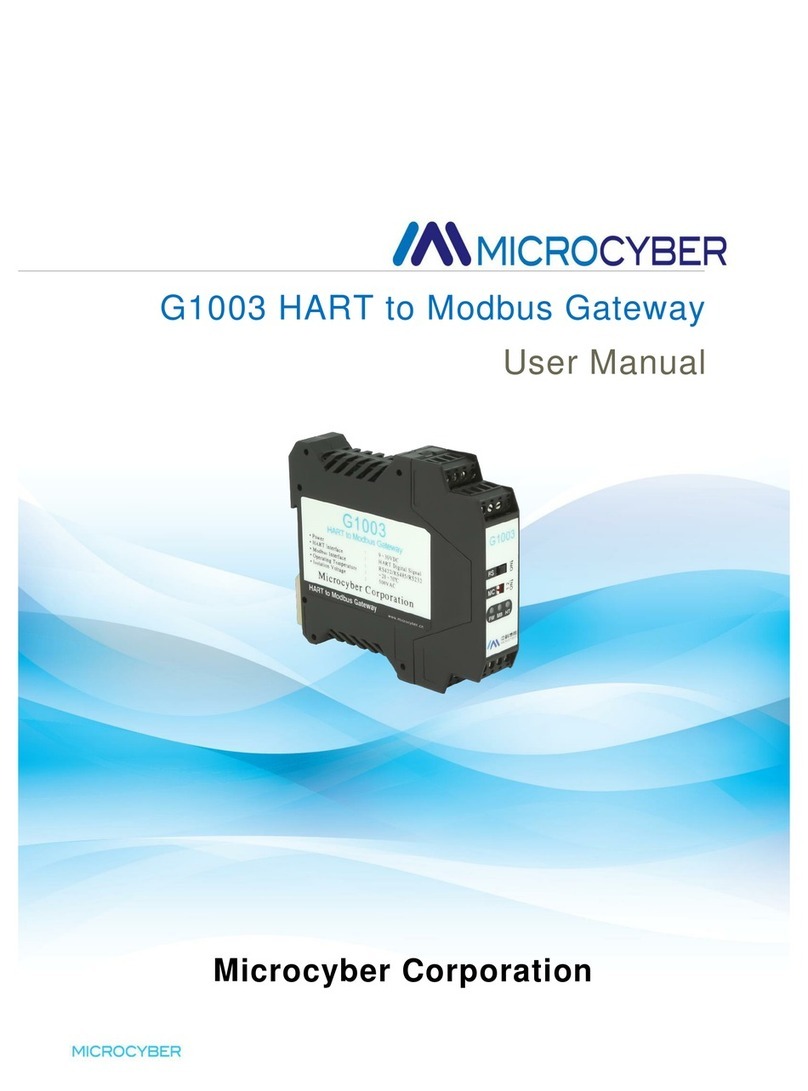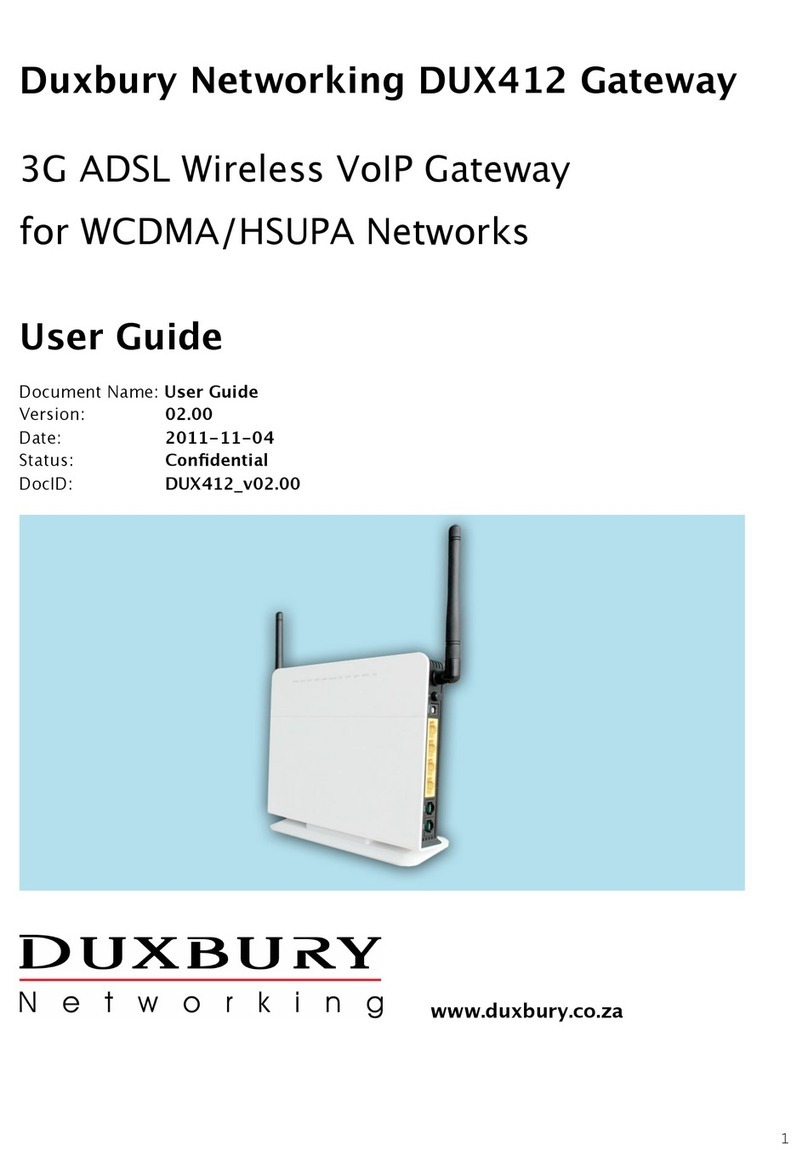HID VertX EVO V1000 User manual

VertX EVO V1000
Installation Guide
71000-901, Rev. A.4
July 2016
hidglobal.com

VertX EVO V1000 User Guide, 71000-901, Rev. A.4
Page 2 of 25 July 2016
Copyright
©2012 - 2016 HID Global Corporation/ASSA ABLOY AB.
All rights reserved. This document may not be reproduced, disseminated or republished in any
form without the prior written permission of HID Global Corporation.
Trademarks
HID GLOBAL, HID, the HID logo, and VertX are the trademarks or registered trademarks of
HID Global Corporation, or its licensors, in the U.S. and other countries.
Revision History
Date
Description
Version
July 2016 Update to Section 3.4, wiring warning. A.4
February 2016 Update Global Contacts information and Section 5.1.3.1, password
configuration information. A.3
September 2012 Update Discovery GUI and Virtual Port, Section 2 A.2
July 2011 VertX Installation minus modem A.1
Contacts
For additional offices around the world, see www.hidglobal.com corporate offices.
North America Asia Pacific
611 Center Ridge Drive
Austin, TX 78753
USA
Phone: 866-607-7339
Fax: 949-732-2120
19/F 625 King’s Road
North Point, Island East
Hong Kong
Phone: 852 3160 9833
Fax: 852 3160 4809
Europe, Middle East and Africa Brazil
Haverhill Business Park Phoenix Road
Haverhill, Suffolk CB9 7AE
England
Phone: 44 (0) 1440 711 822
Fax: 44 (0) 1440 714 840
Condomínio Business Center
Av. Ermano Marchetti, 1435
Galpão A2 CEP 05038-001
Lapa - São Paulo/SP
Brazil
Phone: 55 11 5514-7100
HID Global Customer Support: www.hidglobal.com/support

July 2016 Page 3 of 25
see
VertX EVO V1000 User Guide, 71000-901, Rev. A.4
Contents
1Introduction..................................................................................................................................4
1.1 Parts List ................................................................................................................................................. 4
1.2 Product Specifications...................................................................................................................... 4
1.3 Cable Specifications............................................................................................................................5
2Overview……………………………………………………………………………………………………………………….6
3Connect…………………………………………………………………………………………………………………………7
3.1 What you need before getting started.......................................................................................7
3.2 V1000........................................................................................................................................................7
3.3 Mounting Instructions ........................................................................................................................7
3.4 Wiring VertX EVO................................................................................................................................8
4Contact…………………………………………………………………………………………………………………………12
4.1 Discovery GUI (for DHCP networks) ......................................................................................... 12
4.2 Virtual Port............................................................................................................................................ 12
5Configure……………………………………………………………………………………………………………………..13
5.1 VertX Communications.................................................................................................................... 13
5.1.1 Configuration GUI Login.................................................................................................. 13
5.1.2 Basic Network Setup......................................................................................................... 13
5.1.3 Host Communication Setup ........................................................................................... 13
5.1.4 Confirmation .........................................................................................................................14
6Communicate ............................................................................................................................. 15
Appendix: A Troubleshooting.................................................................................................. 16
A.1 System Status...................................................................................................................................... 16
A.2 Supplemental Configuration ......................................................................................................... 16
A.3 Configure ...............................................................................................................................................16
A.4 System Time......................................................................................................................................... 17
A.5 Update System.................................................................................................................................... 17
A.6 Battery Replacement........................................................................................................................ 17
A.7 Network Defaults Jumper .............................................................................................................. 18
A.8 Firewall ...................................................................................................................................................19
Appendix: B Regulatory ........................................................................................................... 20
Appendix: C Configuration Checklist - Static ..................................................................... 21
Appendix: D VertX Installation Worksheet..........................................................................22

VertX EVO V1000 User Guide, 71000-901, Rev. A.4
Page 4 of 25 July 2016
1Introduction
HID Global’s VertX EVO® open platform is flexible and scalable to permit economic and high
performance access control solutions for a wide range of applications. The VertX EVO V1000
interconnects through different sub-networks and protocols to a standard TCP/IP network with
the capability of a variety of applications.
For example, the VertX EVO Access Controllers are a cost-effective method for two-way
communication using Ethernet between a computer and a V1000. In addition, the VertX EVO
V1000 communicates through a RS-232 serial port and multi-drop RS-485 ports.
1.1 Parts List
Description
Quantity
VertX EVO units (one of the following):
V1000 (Access Controller)
Note: Each VertX EVO controller has a plastic base and is covered with a
plastic lid.
1 V1000 used with any
combination of (up to
32) interface panels.
•
Lithium Battery
1
•
Mounting screws
4
•
2.2K EOL resistors
8 ea. V1000
•
Quick Installation Guide
1
•
Installation Wiring Diagram Example 1
Note: One or more VertX Interface panels are required when installing a VertX EVO V1000
controller.
1.2 Product Specifications
Description
Specification
Power Supply 12-24VDC
Maximum Current at 12-24VDC per Unit 1 Amp
Average Operating Current at 12VDC 210mA
Operating Temperature Range
32°-120°F (0°- 49°C)
Humidity
5% to 85% non-condensing
SD Card Contact System/Software OEM to discuss possible
usage and SD Card specifications.
USB Port Reserved for Future Use

July 2016 Page 5 of 25
see
VertX EVO V1000 User Guide, 71000-901, Rev. A.4
1.3 Cable Specifications
Cable Type
Length
Specification
RS-485 *
4000 feet (1220 m) to
host
Using Belden 3105A, 22AWG twisted pair, shielded 100
Ω
cable, or equivalent.
Input Circuits * 500 feet (150 m) 2-conductor, shielded, using ALPHA 1292C (22AWG) or
Alpha 2421C (18AWG), or equivalent.
Output Circuits * 500 feet (150 m)
2-conductor, using ALPHA 1172C (22AWG) or Alpha 1897C
(18AWG), or equivalent.
Wiegand
500 feet (150 m) to
reader
ALPHA 1299C, 22AWG, 9-conductor, stranded, overall
shield.
Fewer conductors needed if all control lines are not used.
Ethernet 328 feet (100 m) Cat5, Cat5E, and Cat6
Power Supply
12-24 VDC IN ---- Refer to your Power Supply Installation Guide.
* Minimum wire gauge depends on cable length and current requirements.

VertX EVO V1000 User Guide, 71000-901, Rev. A.4
Page 6 of 25 July 2016
2Overview
The following outlines what is required to install VertX EVO controllers.

July 2016 Page 7 of 25
see
VertX EVO V1000 User Guide, 71000-901, Rev. A.4
3Connect
3.1 What you need before getting started
Prior to starting the installation, completely read this guide.
See Section Appendix C: Configuration Checklist - Static, and gather the information before
proceeding with these instructions.
CAUTION: VertX controllers and panels are sensitive to Electrostatic Discharges (ESD).
Observe precautions while handling the circuit board assembly by using proper grounding
straps and handling precautions at all times.
3.2 V1000
1. Verify the battery jumper is installed in the ON position, P10 connector.
2. If installing a V1000 - Verify the RS-485 termination jumper is in the Out position
when there are no panels attached to the port. If there are downstream interface
panels attached, place the termination jumper in the In position. The V1000 is
shipped with jumpers in the Out positions.
Note: P6 controls Port 2 and P5 controls Port 1. This is an issue if one of the jumpers
is in the IN position and the other is in the OUT position.
3.3 Mounting Instructions
1. Always mount the controllers and interface panels in a secure area.
2. Mount using the four mounting screws (provided) or other appropriate fasteners.
Place the fasteners in the corner holes of the base.
3. Stack the VertX EVO devices with or without the cover. Do not remove the plastic
base. Position the VertX EVO devices in such a way as to provide room for wiring, air-
flow and cable runs.
CAUTION: Stacking the VertX EVO devices without the cover in place risks the danger of
breaking the LEDS unless spacers are used for separation.

VertX EVO V1000 User Guide, 71000-901, Rev. A.4
Page 8 of 25 July 2016
3.4 Wiring VertX EVO
WARNING: VertX EVO V1000 is a NON-PoE device. DO NOT connect J1 (Ethernet port) to a
PoE capable port. This applies to both direct PoE Power Sourcing Equipment (Endspan
PSE) and PoE injector (Midspan PSE) equipment. Not all PSE's correctly detect Non-PoE-
capable devices, and such PSE's may not function as expected when connected to Non-PoE
equipment. If the only option is to connect the controller to a PoE enabled port, disable
power of the PoE port before connecting.
Note: Carefully peel the attached Warning Label from the bottom of the unit and leave the
label attached to the unit's cover for future reference.
CAUTION: Connectors on the VertX EVO devices are positioned to be mirror images and are
not interchangeable once the installation is complete. Therefore, you cannot unplug a
connector from one side and plug it into the corresponding connector on the other side.
1. Network Connection: Connect the VertX EVO V1000 to the network using
a standard Cat5 network patch cable. Connect one end of the Cat5 network patch
cable to the J1 (RJ-45) connector on the V1000 and the other end to the network
connection point (network jack, hub, switch, or router) on your site.
Note: Two LED lights exist on the RJ-45 connector. The green LED denotes Ethernet
Activity and the yellow LED denotes speed. When the Yellow LED is on, it indicates
100 Mbits per second. Another LED in-board is a Duplex LED, indicating duplex
communications are available.
2. Power and Alarm input connections (All VertX EVO units): Connect power by
providing appropriate DC input to the P7 connector. Appropriate DC input goes to
Pin 1 and ground to Pin 2. Batt Fail, AC Fail, and Tamper switch inputs are wired as
shown in the table. Connect the Bat Fail and AC Fail inputs to battery low/failure and
AC failure contacts provided on the power supply. Connect the Tamper input to a
tamper switch on the enclosure.
Pin #
P7
1
12-24VDC
2 Ground
3
Bat Fail -
4 Bat Fail +
5
AC Fail -
6 AC Fail +
7
Tamper -
8 Tamper +

July 2016 Page 9 of 25
see
VertX EVO V1000 User Guide, 71000-901, Rev. A.4
3. RS-485 Connections: The V1000 has two RS-485 connectors and uses the 10-pin
connector on P3 and P4. Each RS-485 bus can support a maximum of 16 V100-Series
panels using one or two ports.
Having two ports on each bus provides the option of splitting each RS-485 bus into
two physical connections, allowing a total of four physical connections for the two
busses.
RS-485 busses must be connected in a daisy chain topology and not a star topology.
The V1000 RS-485 termination jumper should be in the Out position if there are no
panels attached to the port. If there are downstream panels attached then the
termination jumper should be in the In position.
PCB Pin #
V2000 P1
PCB Pin #
V1000 P4 (port 3 and 4)
1
A
10
A
2 B 9 B
3
Shield
8
Shield
4 Not in use 7 Not in use
5
Not in use
6
Not in use
6 A 5 A
7
B
4
B
8 Shield 3 Shield
9 Not in use 2 Not in use
10 Not in use 1 Not in use
CAUTION: The V1000 RS-485 Ports 1 & 2 (P3) are a common bus and therefore
cannot have panels with duplicate Interface Addresses assigned. The same is true
of the V1000 RS-485, Ports 3 & 4 (P4). For example, two panels, both with
Interface Address 0 (factory default), cannot be connected to Ports 1 and/or 2 (P3).
Wire the RS-485 to the In position only of the P9 terminal block for the V100-Series
panel. This is especially important when the RS-485 communication is in a “daisy
chain” configuration. If the RS-485 is wired In and Out, and power is lost, or the P9
terminal block is unplugged on a V100-Series panel, RS-485 communications will be
lost to downstream V100-Series panels.

VertX EVO V1000 User Guide, 71000-901, Rev. A.4
Page 10 of 25 July 2016
4. Output Connections (VertX EVO V1000): All Output connections are used for
general purpose controls. The following table shows where the various outputs are
located. Pin numbers shown use the convention “NO/C/NC”.
For example, Output 1, V1000: P14 Pin 3 is NO (Normally Open)
Pin 4 is C (Common) and Pin 5 is NC (Normally Closed).
Note: Relays are dry contact rated for 2Amps @ 30VDC.
Output Number
V1000
1 P14 Pins 3/4/5
2
P11 Pins 3/4/5
CAUTION: Some magnetic locks exhibit both high in-rush current when activated
and a high instantaneous break voltage when de-energized due to magnetic field
collapse. Use a snubber circuit across the controlling relay terminals to protect the
controlling relay contacts. Go to support.hidglobal.com, see Solution 891 - How do
I wire a High In-Rush Current locking device to VertX/Edge/Edge Solo?
5. Input Connections: Input connections are analog inputs used for a combination of
specific functions such as Request-to-Exit (REX), Door monitor, etc. They can also be
used as general purpose monitoring. Connect one side of the switch or contact to the
+ (plus) lead and the other to the – (minus) lead. The following table shows where the
inputs are located. Pin numbers shown on the cover use the convention +/–.
The default REX input configuration is normally open (NO) unsupervised (no EOL
resistors).
However, the default Door Switch (DS) configuration is Normally Closed (NC),
unsupervised (no EOL resistors).
All other input points are defaulted for NO switches and are unsupervised (no EOL
resistors).
Any input can be configured as NO or NC, as well as unsupervised or supervised.

July 2016 Page 11 of 25
see
VertX EVO V1000 User Guide, 71000-901, Rev. A.4
They can be configured for supervisory resistors of 1K – 6K Ohm. The setup of
supervised inputs should be done during configuration of the VertX EVO devices
through the host.
Example: Input 1, V1000 is: P14 Pin1 is + (plus) and Pin 2 is – (minus).
Except for the door monitor, all other inputs default to NO, unsupervised:
Supervised inputs can be configured for:
Input Number
V1000
1
P14 Pins 1/2
2 P11 Pins 4/3
3
P7 Pins 8/7 - Tamper
4 P7 Pins 6/5 - AC Fail
5
P7 Pins 4/3 - Batt Fail

VertX EVO V1000 User Guide, 71000-901, Rev. A.4
Page 12 of 25 July 2016
4Contact
Contact the VertX controller through the following methods.
Discovery Client (DHCP or Static TCP/IP Configurations Only)
Virtual Port
4.1 Discovery GUI (for DHCP networks)
The Discovery Client provides a technician with a method of locating all of the VertX
controllers that are connected to a network. Controller information is displayed providing the
ability to ‘blink’ the VertX controller Comm LED and configure the unit by launching a browser
pointed at the Configuration GUI of the targeted controller. When the Discovery Client is
launched, a discover command is issued and the Configuration GUI screen is populated with
the results. Also provided is the ability to refresh the Configuration GUI screen on command.
Use this feature when the VertX controllers and network have been installed and are
operational, but before the VertX controller(s) has been configured. At this point, all of the
controllers on a network will have the same host name and unknown IP addresses (assuming a
DHCP environment). In this scenario, the only mechanism available to configure a controller is
the serial debug port or by only placing one controller on the network at a time. The Discovery
Client provides an easy to use mechanism to configure controllers.
Note: The Controller must be connected to the network before power is applied for DHCP to
function.
1. With the PC connected to the same network as the Controller, double-click
hid-discovery.exe.
2. Select the device from the list.
3. Click the Browser. If the Discovery GUI is not on the PC, download the application
from www.hidglobal.com/downloads/DiscoveryClient.zip.
Note: Java is required for the Discovery GUI.
4. Go to Section 5: Configure.
4.2 Virtual Port
Contact a VertX controller by directly connecting the computer to the controller using an
Ethernet cable. By default, every controller is configured to respond to a fixed address:
169.254.242.121.
1. Ensure you are running a Windows 2000 or XP computer.
1. Disconnect your Windows computer from its hub or network.
2. Connect the Windows computer to the controller with an Ethernet cable.
3 Select the Windows Start > Run.
4. Enter ipconfig /renew. Wait for DHCP to timeout (approximately 60 sec.). The
computer will acquire a 169.254.x.x address.
5. Access a web browser and enter 169.254.242.121 into the Address field. The
controller is now accessible through this Virtual Port.

July 2016 Page 13 of 25
see
VertX EVO V1000 User Guide, 71000-901, Rev. A.4
5Configure
This section describes the communications configuration that enables the controller to
communicate with the host software.
There are two methods of communication possible on a V1000 controller:
Dynamic Host Configuration Protocol (DHCP) TCP/IP Addressing
Static TCP/IP Addressing. See Section Appendix C: Configuration Checklist - Static for a
list of criteria needed for a Static TCP/IP configuration.
Enter only the configuration that relates to your sites specific installation.
5.1 VertX Communications
The VertX communications configuration is provided through a browser-based application
called the Configuration GUI (Graphic User Interface).
5.1.1 Configuration GUI Login
1. The Login screen for that controller displays.
2. In the User name field, enter admin (leaving the Password field empty).
3. Click OK.
5.1.2 Basic Network Setup
Select the Connection Selection option to establish Network connection.
Default network information loads. Before making changes, review the default network
information.
Note: Most configurations will not require accessing the Advanced Setup window.
5.1.2.1 Static Network
If using a Static TCP/IP network, proceed with changes using the information collected on
the Configuration Checklist. See Section Appendix C: Configuration Checklist - Static.
5.1.2.2 DHCP Network
If using a DHCP TCP/IP network, this information is configured automatically.
5.1.3 Host Communication Setup
Enter the Host Name, and the Here I Am Interval collected on the Configuration Checklist.
See Section Appendix C: Configuration Checklist - Static.
5.1.3.1 Controller Login Password
During your first instance of accessing the Configuration GUI, you must change the
password (located at the bottom of the screen). Enter a new password, and reenter the
password in the second field.
Note: This step is not necessary during any consecutive Configuration GUI sessions.
However on consecutive sessions the password may be changed by the user. The
password must be between 6 to 10 characters long and can include all printable ASCII
characters from 32 to 126 (decimal) inclusive That is ' ' through to '~' ,
see http://www.asciitable.com.

VertX EVO V1000 User Guide, 71000-901, Rev. A.4
Page 14 of 25 July 2016
Extended ASCII such as £ (pound) and € (euro) are NOT supported as they lie outside of
the original ASCII range.
Once configuration changes have been made, click Submit, and the Confirmation window
displays. See Section 5.1.4: Confirmation.
5.1.4 Confirmation
Once configuration changes are complete and submitted, the Confirmation screen will
display. Verify that the changes submitted are accurate, and click Save. If the changes
submitted are not accurate, click Cancel and adjust the settings appropriately.

July 2016 Page 15 of 25
see
VertX EVO V1000 User Guide, 71000-901, Rev. A.4
6Communicate
Now that the controller is connected, contacted and configured, communicate with the
controller using the host.
Basic setup is now complete!
Additional troubleshooting tools are available on the System Status and Supplemental
Configuration windows. See Section A.1.System Status and Section A.2 Supplemental
Configuration.

VertX EVO V1000 User Guide, 71000-901, Rev. A.4
Page 16 of 25 July 2016
Appendix: A Troubleshooting
A.1 System Status
System Status provides a technician with a method of validating the VertX installation, field
wiring and installed devices. Perform the System Status at any time after the VertX controller
has been installed and power is available. In addition, a technician may perform a system
status as many times as necessary.
Upon startup, the System Status window will discover all connected and powered V100-
Series devices attached to the controller and displays the inputs, outputs, and host status.
Reference the Legend to determine the meaning of the different images.
By clicking Add Unconfigured you can configure the V1000 for the attached panels and
readers. The assumption is that two readers are attached to any V100 interface panel and
that both readers are Wiegand card only. Once the configuration is complete, the VertX
software will refresh.
Once the window refreshes, a Restore Previous button becomes available.
The Restore Previous button enables the technician to use the previously saved
configuration.
A.2 Supplemental Configuration
Supplemental Configuration provides the ability to view and configure system inputs and
outputs.
These buttons provide navigation to the following functionality:
Configure - configure inputs, outputs and door characteristics for a V1000, V100,
V200, and V300.
System Time - update System Time
Update System – updates the interface board’s firmware
A.3 Configure
Configure provides the ability to view and modify system inputs and outputs and door
characteristics.
Upon successful validation, the Save button will write modified values to the interface panel.

July 2016 Page 17 of 25
see
VertX EVO V1000 User Guide, 71000-901, Rev. A.4
A.4 System Time
System Time provides the ability to view and set the date, time, and time zone values on the
controller.
Upon initialization, Date, Time, Time Zone and TZ fields will be populated with the current
system settings. The date displayed (non-text box) will be updated approximately every 30
seconds.
The Time Zone field provides a drop-down menu. One of the options in the Time Zone drop-
down menu is Custom Time Zone. If Custom Time Zone is selected, the TZ text box will be
enabled. Otherwise, the TZ is associated with the Time Zone field.
A.5 Update System
Update System allows the user to update the firmware on the interface panel. During a
download the interface panel image flashes between grey and yellow. When a download
completes the image color changes to green for successful or red for failure. If the download
fails, view a tool tip with the error status code by hovering your mouse over the image in
question.
Initially, all of the interface panels are selected by default to be updated.
Note: Depending on the VertX controller and system, it may take several minutes to
complete a download.
A.6 Battery Replacement
Do not replace the battery while power is applied to the VertX EVO Controllers.
Remove the cover.
Insert the battery (with the + (positive) side facing upwards) under the prongs, lowering the
opposite side into place. Reinstall the cover.
To remove the battery, remove cover, lift the side opposite from the prongs first and slide
the battery out of place away from the prongs. Reinstall the cover.

VertX EVO V1000 User Guide, 71000-901, Rev. A.4
Page 18 of 25 July 2016
A.7 Network Defaults Jumper
The Network Defaults Jumper requires that someone with physical access to the V1000,
place a jumper over the Debug port while the controller is rebooting, as detailed below. The
controller reconfigures its network settings to the factory defaults when the jumper is on the
Debug port during a reboot. From this point, configuration (or re-configuration) proceeds
normally.
Use the Network Defaults Jumper to correct potential errors in a VertX controller’s network
configuration.
A jumper is supplied with the V1000, and is located across pins 6 & 8 of the Debug port for
safe storage. Replace the jumper across pins 6 and 8 for safe storage, after restoring
network defaults.
1. Remove the V1000 cover.
2. Reboot the controller and place the supplied jumper over pins 3 & 5 of the Debug
port while the Power LED is green.
Note: The network reset opportunity occurs for 30 seconds while rebooting the
controller.
3. After 30 seconds, the Power LED flashes green five times, indicating success. When
an error occurs, the LED flashes red five times. In both instances, the LED turns off
indicating a power cycle is required.
4. Remove the jumper, return it to pins 6 & 8 of the Debug port and cycle power. The
controller resets in approximately 60-seconds. Once the reset is complete, the LED
returns to green. After the 30-second window, the LED returns to normal Red state.
The controller is fully functional during this time.
CAUTION: During the controller rebooting process, all network configuration
information is overwritten and returned to the original defaults.
5. Configure the controller for your installation parameters. See Section 5.1: VertX
Communications.
6. Replace the V1000 cover.

July 2016 Page 19 of 25
see
VertX EVO V1000 User Guide, 71000-901, Rev. A.4
A.8 Firewall
If the VertX controller is being installed where it communicates through a firewall, then the
firewall may need to be configured to allow TCP data transfer on the specified port(s).
1. Before starting, ensure that any pop-up blocker software is disabled on the
computer.
2. Open the following ports on the firewall.
connection_port (4070) TCP outbound. This port must be open on the Host
computer.
listen_port (4050) TCP incoming. This port must be open when using selected
applications.
If you are not familiar with configuring a firewall for a network, contact the Network/IT
administrator or manager.
CAUTION: If the firewall is not configured properly the controller may not communicate
with the host.

VertX EVO V1000 User Guide, 71000-901, Rev. A.4
Page 20 of 25 July 2016
Appendix: B Regulatory
All National and local Electrical codes apply.
This equipment is intended to be powered from a limited power source output of a
previously certified power supply.
Changes or modifications not expressly approved by the party responsible for compliance
could void the user’s authority to operate the equipment.
Class A Digital Devices
FCC Compliance Statement:This equipment has been tested and found to comply with the
limits for a Class. A digital device, pursuant to part 15 of the FCC Rules. These limits are
designed to provide reasonable protection against harmful interference when the equipment is
operated in a commercial environment. This equipment generates, uses, and can radiate radio
frequency energy and, if not installed and used in accordance with the instruction manual, may
cause harmful interference to radio communications. Operation of this equipment in a
residential area is likely to cause harmful interference in which case the user will be required to
correct the interference at their own expense.
Canada Class A
CE Mark – Europe (EU)
C-Tick - Australia and New Zealand
VCCI - Japan
NCC - Taiwan
SRRC - China
IDA - Singapore
KCC - Korea
UL Recognized Component (UL294 and UL1076)
This product includes software developed by the OpenSSL Project for use in the OpenSSL
Toolkit (http://www.openssl.org/).
This product includes cryptographic software written by Eric Young (eay@cryptsoft.com).
Other manuals for VertX EVO V1000
1
Table of contents
Other HID Gateway manuals
Popular Gateway manuals by other brands
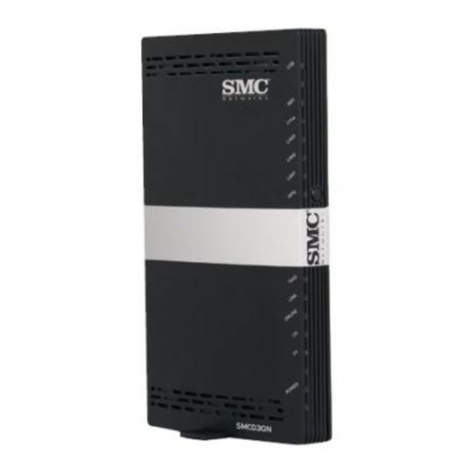
SMC Networks
SMC Networks SMCD3GN3 Administrator user guide

I-O Corporation
I-O Corporation Kyo Manage 5735km Specification sheet
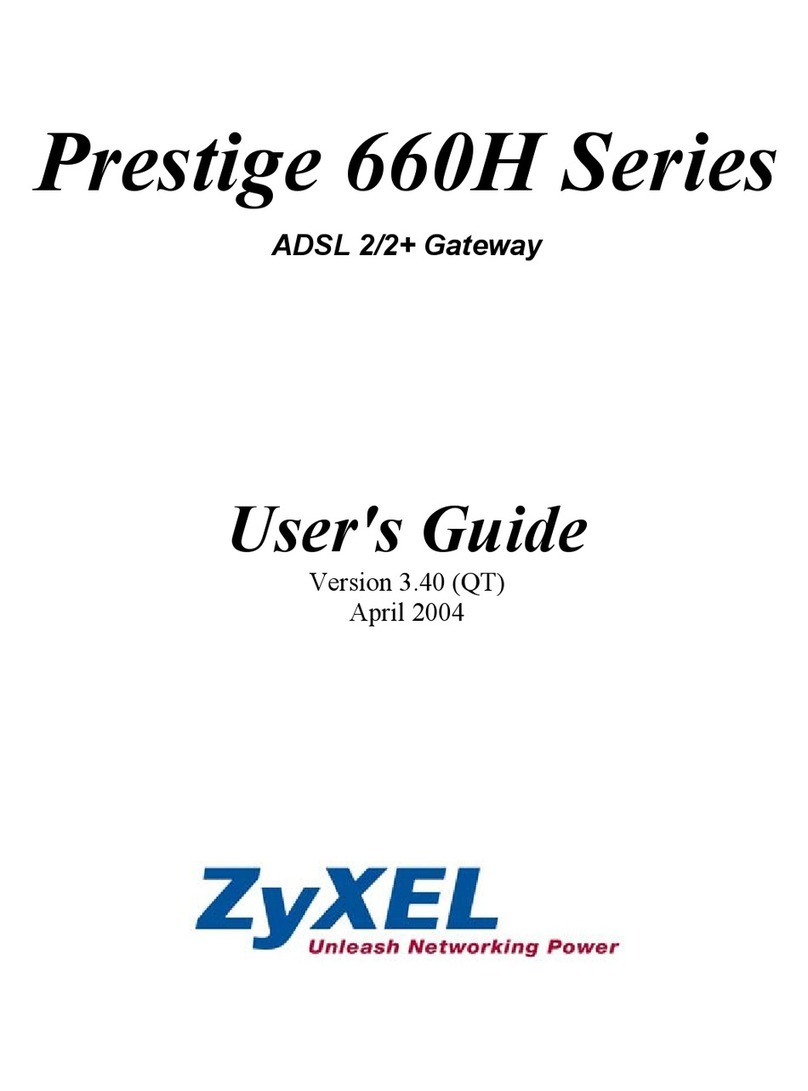
ZyXEL Communications
ZyXEL Communications P-660H-61 user guide
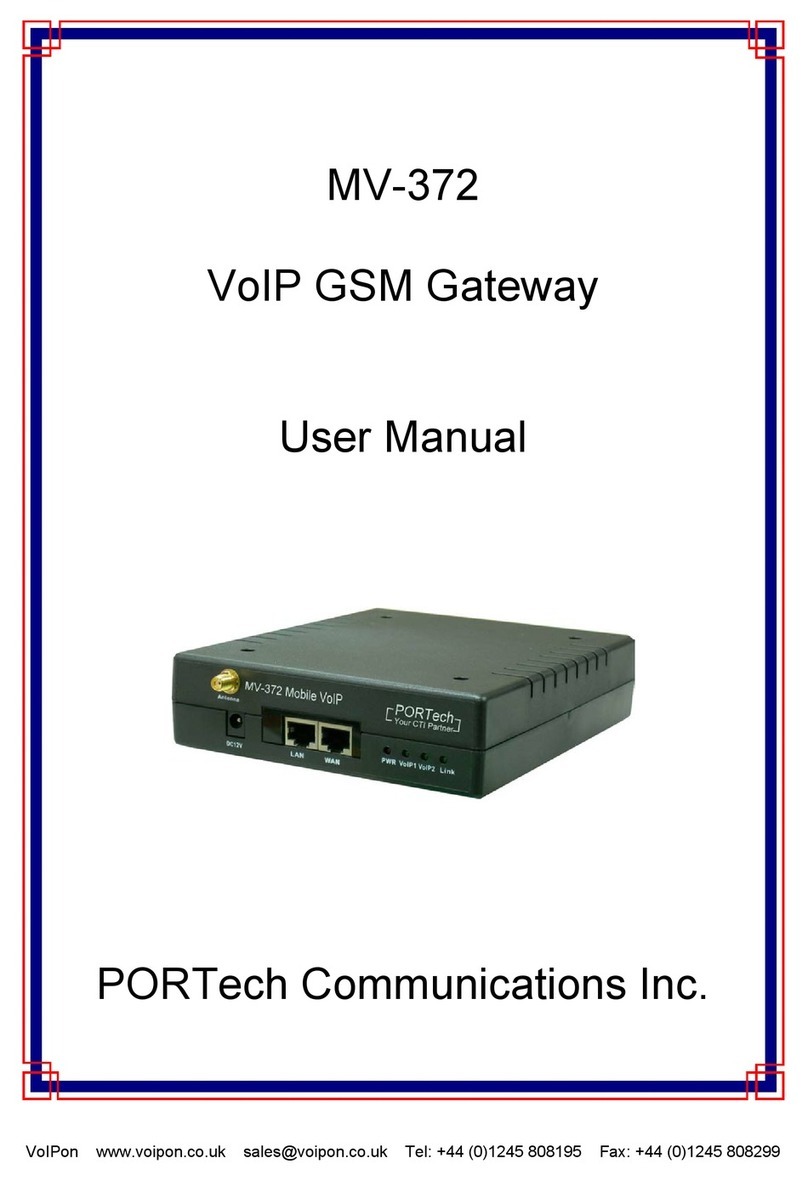
Portech
Portech MV-372 user manual
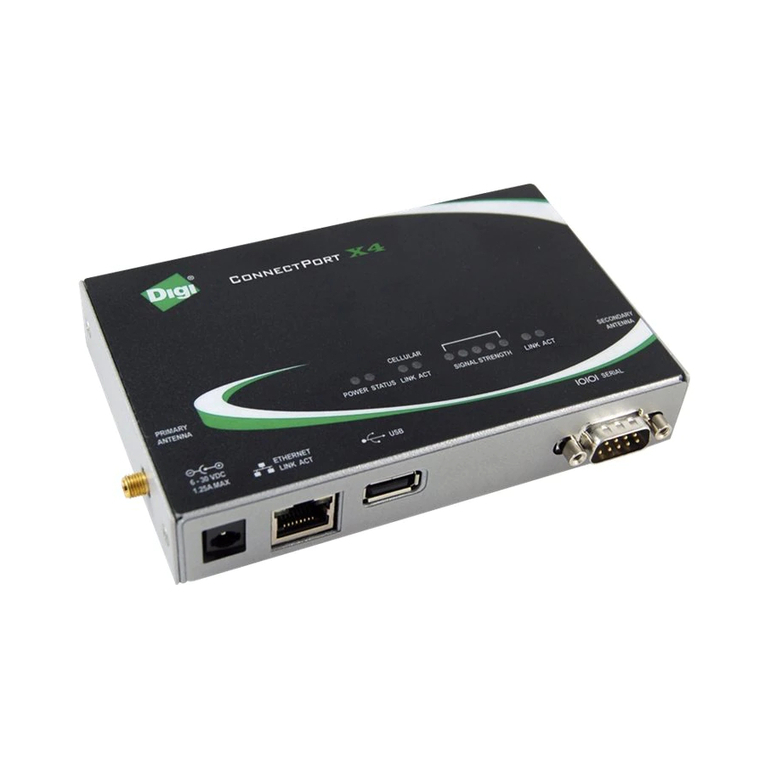
Digi
Digi ConnectPort X4 Getting started guide
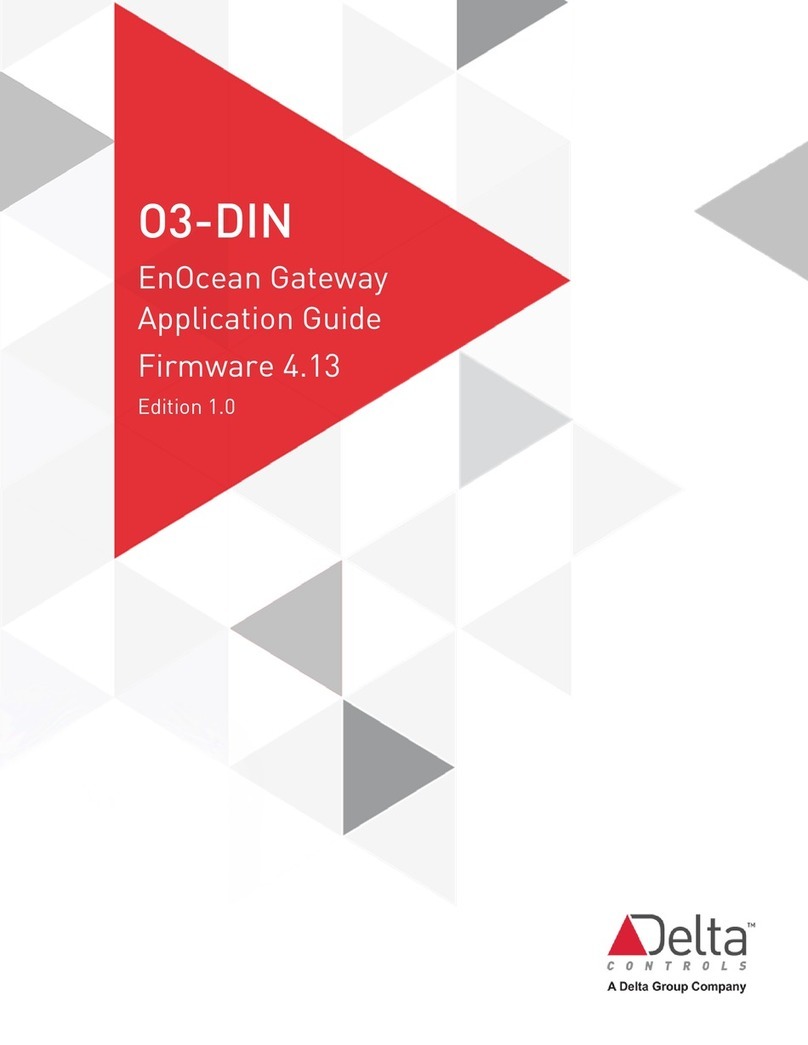
DELTA GROUP
DELTA GROUP EnOcean O3-DIN Application guide

